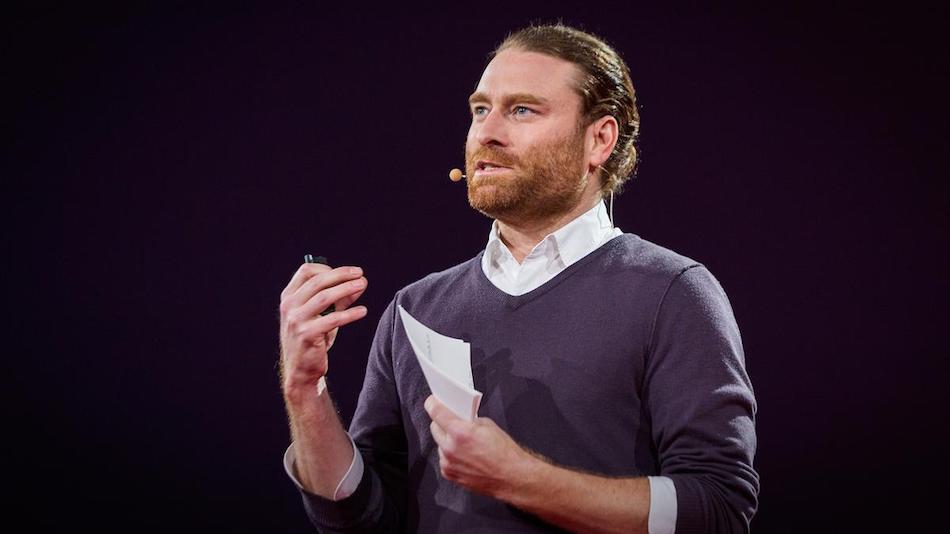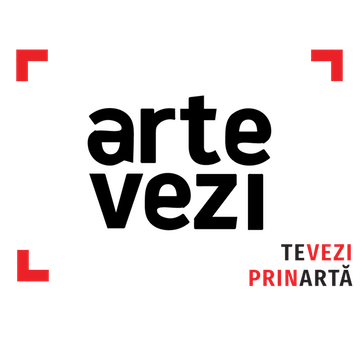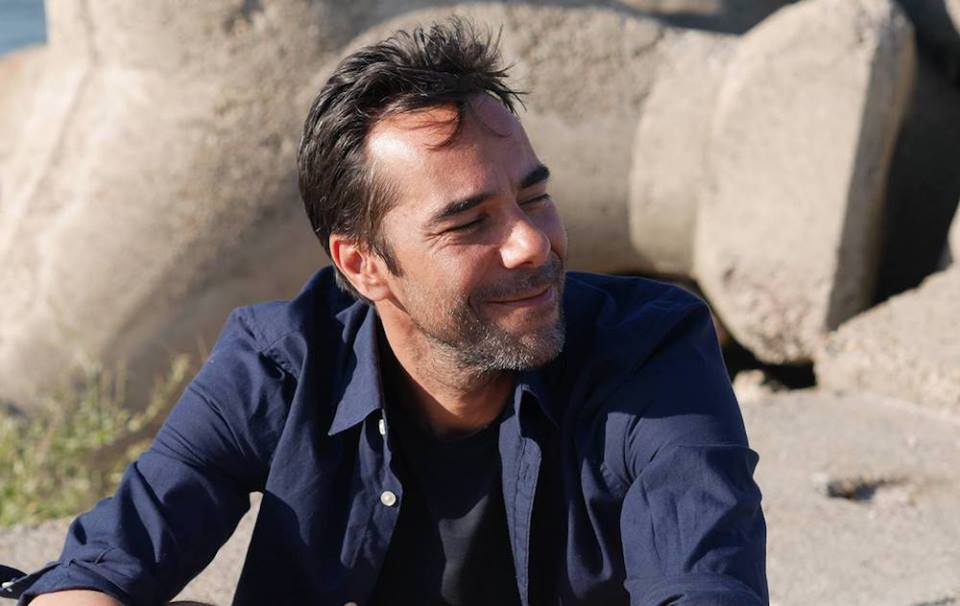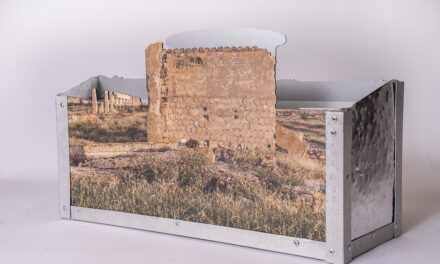Dan Benzakein is one of the best VR & AR specialists in our country, with an impressive background in film as Programming Director at a number of film festivals in France, and a progressive artistic vision regarding visual culture. Driven by a passion for discovery, Dan moved from France to Romania, to pursue the exploration of a new world – Virtual Reality. As he “teleported” to Romania, he started to develop new ways of promoting and raising awareness about VR & AR, founding early 2017 Realities, the Romanian VR & AR Think Tank, a platform for professionals active within the domain of VR & AR in Romania. In May of the same year he organized the country’s first virtual art performance, the V/ART exhibition.
E.G. : If you were a virtual image and not a real person, how would you see yourself?
D.B. : I would be a character in Journey, one of the most beautiful videogames ever made:

E.G.: Before being a promoter of virtual reality in Romania, you were involved in the film industry in France. Can you share a key moment of your work in that industry?
D.B. : In the past century, I spent 10 years working as the programming director of four film festivals in France. There are many memories of meeting talented filmmakers from all over the world, but mostly, I would say that the defining trait of that work (and all that has followed since) has always been about connecting the work of creators with audiences. I guess this is what I’m still doing, although in a more innovative area.
E.G.: How do you look at the transition from film to VR as a storytelling form? Was it natural for you or a road full of obstacles?
D.B. : Even though virtual reality has been in experimentation since the late 60s, as a medium it is still very much in its infancy. 2016 can be considered as year one of the new wave of VR, with the release of consumer systems. There are still many obstacles on the road to mainstream adoption. To keep things short, I would say these obstacles are both technological (the hardware is still expensive, bulky, and not very user-friendly) and content-related (lack thereof, storytelling techniques still experimental).
One thing is certain, however: VR is not cinema, not an extension of it, not a replacement. It’s a new medium which has a unique specificity: putting the user at the center of the story or action. If you look at the history of storytelling, we’ve gone from books to movie screens, tv screens, laptops and smartphones, which only provide the audience with a window into the story.
By getting rid of the frame, virtual reality allows the audience to fully immerse itself in a story, and experience it first-hand, from the inside. As Chris Milk, one of the pioneers of VR storytelling puts it, « VR connects humans to other humans in a profound way that I’ve never seen before in any other form of media. And it can change people’s perception of each other. And that’s how I think virtual reality has the potential to actually change the world.

Chris Milk – TED 2015
E.G. : What sparked your passion for virtual reality? Is there a movie that influenced you in the direction of Virtual Reality?
D.B. : It mostly happened out of curiosity. I got interested in virtual reality late 2014, when I tried an Oculus developer headset. This was clearly the first time I felt a technology had some kind of magic attached to it. Put on the headset, and suddenly you’re somewhere else, perhaps even someone else. While VR is definitely not for everyone, I would simply suggest to try it. It’s the best (and only) way to fully realize how powerful it can be.
I don’t think films have had any influence on directing me towards VR, although I did enjoy the smart, creative questioning of reality in movies like The Matrix, Existenz or Strange Days. VR is a natural direction for many people who are passionate about stories and experiences. It sometimes feels like a medium sitting at the exact crossroads of film and video games, a storytelling space that allows us to experience other realities, in a physical way.
E.G.: How do you think VR will influence traditional means of expression in art, and how do you think they will coexist (art as a picture of reality, and VR as the expression of a new reality)?
D.B. : It’s difficult to predict the influence of virtual reality on arts as the creative tools have only been here a few years, and the technology keeps evolving fast. Google’s Tilt Brush, which is a simple 3D painting tool, has already been embraced by many artists, as it gives you the unique ability to step inside your canvas. Something halfway between painting and sculpture. Just watch legendary Disney animator Glen Keane (The Little Mermaid, Tarzan) discover the power of creating in virtual reality, it says it all.
Augmented and mixed reality are all about expanding our real reality. There will certainly be more and more arts-related experiences playing with the boundaries between the real and the virtual. Virtual reality, on the other hand, is better suited for creating imaginary worlds and stories rather than trying to replicate reality. VR seems like an amazing tool for recreating dreams — and sharing them, which is even more fascinating.
E.G. : A major virtual arts museum, Kremer, opened in October 2017. How do you see the future of art in relation to VR, and what impact do you think it will have on galleries and museums in the offline environment?
D.B. : The launch of the Kremer Museum is indeed a strong signal as to the impact of technology in helping traditional art reach the younger generations. VR (and AR) are great additions to the museum experience, as they allow to go deeper into the creation or creative process of the artist. Over the past two years, there have been many interesting pieces of immersive content expanding on the world of traditional art, such as Dreams of Dali (VR) or ReBlink (AR).

Kremer Museum
On another note, virtual pieces of art are also making their way into galleries and museums. One important thing about art is making it accessible to the public. Even if virtual reality artworks can be found online, it’s always more interesting to experience them within a curated context, like an exhibition, where you are guided into the artist’s work. That’s exactly what the Magik Gallery is doing in San Francisco, with immersive exhibitions of virtual reality art.
E.G.: You are the founder of the Realities community in Romania. What are the objectives of the community in the near future and who do you address more precisely?
D.B. : I started Realities, the Romanian VR & AR Think Tank in 2017 as a platform for people active in these technologies in Romania, so that we could learn, share knowledge and start projects together, as a professional community. We’re still in the early days of these innovative technologies, and our goal is to build the foundation for a strong Romanian VR & AR sector.
Our mission is to inform, explain, and popularize the usage of these technologies, in any sector. Use cases go well beyond entertainment. VR is being used in architecture, healthcare, tourism, and many other industries where it enables prototyping and simulation. We organized four expert meetups last year, reached 100 members organically, and will continue to grow in 2018, with a bigger focus on learning and showcasing the advancements of these technologies.

Realities VR Conference – CINETic Bucharest, March 2017.
E.G.: Although adoption of virtual reality has noticeably increased, there’s still a lack of a critical and theoretical resource for VR & AR. Do you see as important the existence of online journals dedicated to virtual and augmented reality in Romania?
D.B. : This is a key issue. If you ask around, very few people actually know what virtual and augmented reality are. And even if they’ve heard about the technologies, they haven’t experienced them, which is the only way you can fully realize their immersive power. The mainstream media mostly treat them like a technological trend, a gadget.
Also, most blogs and online magazines about VR & AR are technology-focused. It’s time to start looking at the bigger picture, with a critical eye, and above all, with a focus on what makes these technologies unique: the user experiences. In Romania, there’s an interesting online resource that is precisely doing that: Observator Cultural. Highly recommended.
E.G.: Why should there be more investments in VR & AR? What are the advantages of such investments?
D.B : As technologies, both VR and AR are part of a big shift in computing. Within the next 10 years, screens will slowly give way to more immersive and wearable interfaces that will enable us to experience a world seamlessly blending the physical and the digital. This could mean the end of smartphones, and the age of connected glasses. We will hopefully stop looking down to our small screens, and start interacting with information around us in a more natural, intuitive and physical way.
Right now, access to these technologies is still limited, because of the cost of high-end equipment and the complexity of the hardware/software. With time, these costs will start going down and make immersive computing more accessible. Augmented reality will soon become much more mainstream, because both iOS and Android phones are starting to integrate AR capabilities, and we will see many use cases and services emerge.
Now is the right time to start exploring, experimenting and building solutions that will become mainstream within the next decade. Disruptive and innovative technologies always require initial investment (and probably failures). Mobile phones went from simple communications devices to powerful wearable computers in less than 10 years. Similarly, both VR and AR are user-centric technologies that will expand on what smartphones have become: the ultimate, personal tool to interact with information, content and people.
E.G.: What are a few online sources to keep up with the new VR & AR information? Are there any endeavors in VR & AR that have impressed you over time?
D.B. : There are many online resources (mostly in English) that can help you stay updated on VR & AR. For the pros, I’d say Upload VR, Wired for a more general approach, Variety if you’re into film, and many very good Facebook groups you could join to get the essential information daily. And shameless plug, you could also follow our Realities Facebook page 🙂
There are many impressive folks working in this field, across the world. It’s a smart, mixed community of people working in many different industries. But if I had to pick one sector, it would be cinematic VR (films in virtual reality). What’s happening in that space could be compared to the early days of cinema, when a technology was invented but storytelling techniques would need many years of refining to turn that innovation into a major entertainment and art form.
I was lucky to attend the Venice Film Festival last August. While Venice is the world’s oldest film festival, they launched a Virtual Reality section and competition in 2017 that showcased over 30 VR movies from all over the world. Amazing experience, and the feeling I was witnessing the birth of a new artform. If you’re interested in VR and film, you may want to check the piece I wrote about Venice VR.
E.G.: Have you thought about doing a VR exhibition in Romania? Which artistic domains would you consider?
D.B. : In May 2017, with our friends at Gateway VR, we organized V/ART, a virtual arts performance & exhibition in Bucharest, which challenged five renowned street artists to paint in 3D using Tilt Brush. This was a first experiment for artists used to creating with material tools. After a few hours of training, it was interesting to see them get the hang of the VR brushes, and produce pieces of art that felt different from what they usually do. With Tilt Brush, the interesting part for visitors is that they can step into the paintings, and experience them just like the artists created them.

V/ART performance, Bucharest (May 2017) (c) Gateway VR
I’ve also been watching the VR storytelling space for the past 3 years, going to VR film festivals to try to understand how this medium is shaping itself, somewhere between cinema, theatre, video game and art installations. This is definitely one of the areas I would like to explore more in 2018, by bringing together Romanian filmmakers & storytellers to create more immersive content, and hopefully organizing a festival/showcase. We’re lucky to have one of the world’s first VR cinemas in Bucharest, and we’ll certainly collaborate with them to bring more immersive stories to the public.
Photo credits:
https://www.wired.com/2015/03/wired-ted/
http://hammametnow.com/news/art-movements/
https://www.vrstudio.ro/vart-2017/
Article – Elena Ghițoiu & Oana Bălțatu








